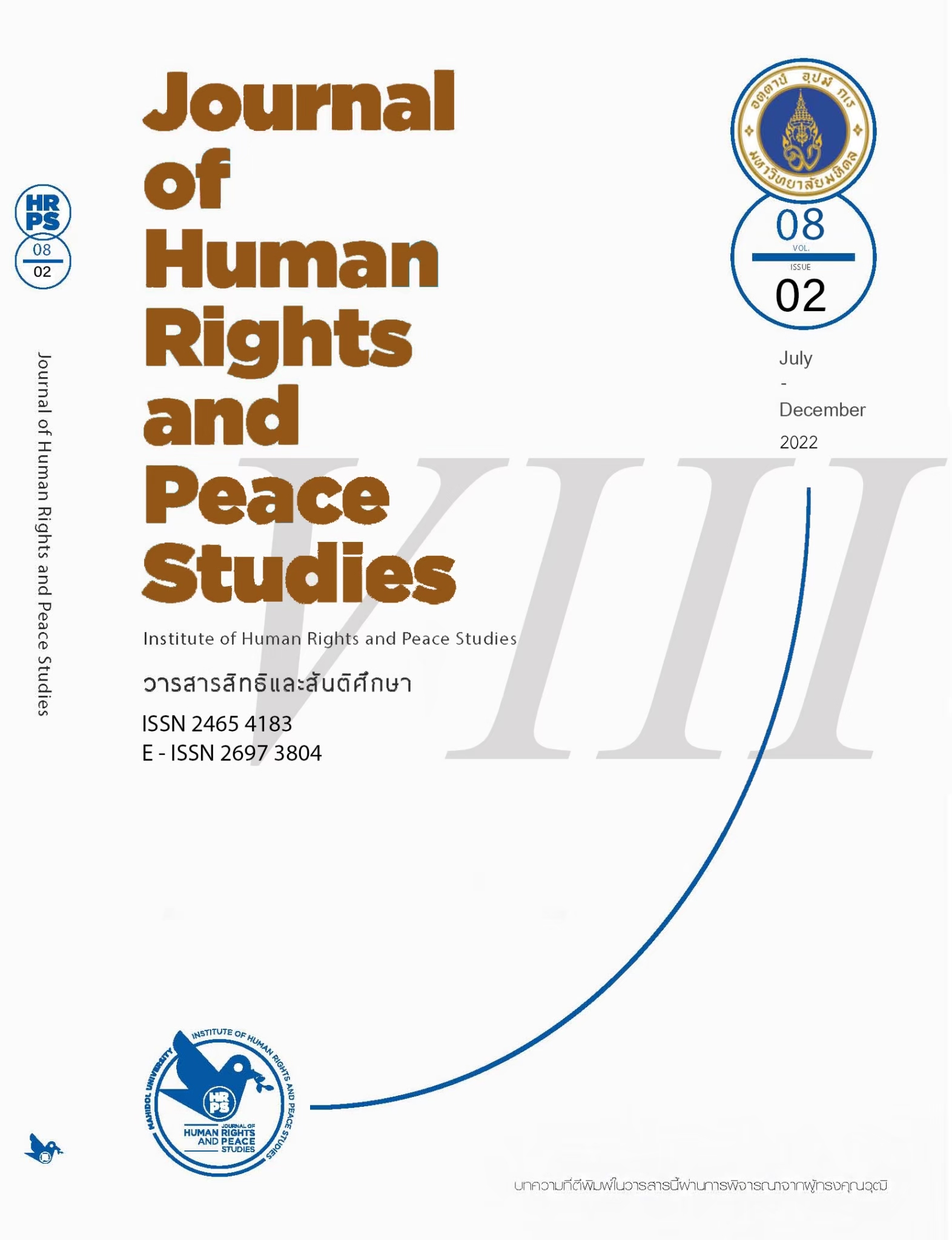Pedagogies for Peacebuilding in Higher Education: How and why should higher education institutions get involved in teaching for peace?.
Main Article Content
Article Details

This work is licensed under a Creative Commons Attribution-NonCommercial-NoDerivatives 4.0 International License.
The views, opinions, and pictures expressed in this journal are those of the authors and do not necessarily reflect the opinions and viewpoints of the editor and the editorial board. All rights are reserved by the authors and the Institute of Human Rights and Peace Studies of Mahidol University. No part of this journal may be reproduced, stored in a retrieval system, or transmitted in any form or by any means without the prior permission in writing from the journal’s editor, or as expressly permitted by law, or under terms agreed with the appropriate reprographics rights organization. Non-commercial use of information in this journal must be properly referenced.
References
Freire, P. (1970). Pedagogy of the oppressed. Translated by M. Bergman Ramos, New York: Herder and Herder.
Giroux, H.A. (2004). Cultural studies, public pedagogy, and the responsibility of intellectuals. Communication and Critical/Cultural Studies 1(1), 59–79. https://doi.org/10.1080/1479142042000180926.
Lederach, J.P. (2005). The moral imagination: The art and soul of building peace. Oxford University Press.
Novelli, M., Lopes Cardozo, M. T. A., & Smith, A. (2015). A theoretical framework for analyzing the contribution of education to sustainable peacebuilding: 4Rs in conflict-affected contexts. the University of Amsterdam. https://core.ac.uk/download/pdf/30614168.pdf


